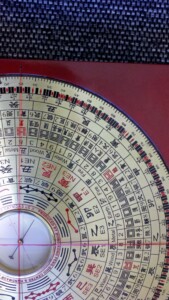
There is a common notion that the style of Feng Shui called “The Flying Star School” is synonymous with Xuan Kong Fei Xing, or even just “Xuan Kong.” This is not true, but in the interest of keeping things simple, let’s just say that the Xuan Kong Fei Xing (Flying Star School) is one style under the larger umbrella of Xuan Kong. Some people practice a style of Feng Shui called “Xuan Kong Da Gua” and it is a very different practice from Xuan Kong Fei Xing.
Said differently, Xuan Kong is a branch of Feng Shui and from it come two more distinct styles, “Da Gua” and “Fei Xing.” We have two other main branches of Feng Shui to distinguish which are San He and San Yuan. All this said, to get to the point of discussing some material in my Beginner’s module for serious students.
In Kartar’s School of Traditional Feng Shui, students are introduced first to the annual star. And yes, it is technically a “flying star.” It is the easiest to teach at a beginner’s level since it is one digit to fly through the eight directions and center “palace.” The more conventional form of instruction is to first teach how to create the flying star chart (from Xuan Kong Fei Xing), which is based on the year of construction and precise compass alignment.
This requires that the student immediately understand (from San Yuan) the 9 Construction Periods and also the 24 “mountains” or 24 sectors of the compass. So, it is more involved than a one digit annual star and eight basic directions. I get to this material in my Intermediate Module, after the student has become familiar with the compass and the eight basic directions as well as the concept of the stars having an element attached to them.
Within the Beginner’s Module, I like to share some of the other ways in which a comparison of the stars can be made within each directional zone, without having yet gotten to the conventional Xuan Kong Fei Xing flying star chart.
• One method involves using the Construction Period Star with the annual star in each direction. One example would be to take a house built in Period 7 and place the 7 star in the center and then float the ascension of the Period stars as if you were going to follow through with a complete flying star chart. But in this case, only use the Construction Period star to pair it with the annual star. For a Period 7 house in 2018, the center palace would start with 7 and then have the annual 9 star placed in the center. Then the Northwest would have a pairing of Construction Period Star 8 and the annual 1 star, etc. Both types of stars (Period and Annual) would fly in an ascending pattern.
• Another method takes the inherent “Trigram” star of each direction and compares it to the annual star. For this technique we do not need to know when a structure was built. For example, the East direction is associated with the Zhen trigram which is also noted as a 3 star. In 2018, there is an annual 7 star in the East, so we could compare the impact of this combination as well, the 3 and 7 stars together. This is a simple method which I see explained on-line and it has also formed the basis for Master Sang’s Yearly Feng Shui Guides.
• Another method which does not factor in the Age of a structure is to take the “House Trigram Number” and fly it through all the directions. The House Trigram Number is derived from the Sitting position of a structure. So, if a house sits (back) to South, that is associated with the Li trigram and the star 9. If a house sits Northwest, it’s House Trigram Number is 6 since the 6 star is another way of describing the Qian trigram. For that example, the 6 star would be placed in the center and then ascend to 7 in the NW, 8 in the West, 9 in the NE, etc.
These three other star floating methods are NOT the conventional Xuan Kong Fei Xing flying star charts, which consist of a Period Star, a Mountain Star, and a Water Star in each of the directions.
This is why you need to be careful of what kind of chart you are looking at or being tested on. If you see a 6 star in the center palace, it may or may not represent Period 6. It may also represent a house that sits in the 6 star direction of Northwest. And with nothing else to compare, it could be an annual star!
I used to say that the simpler methods were used before the Xuan Kong Fei Xing School was created. And the simpler methods, not reliant on the Construction Period, can still be used when there is no way to know when a structure was built. In modern times, that is not such a common occurrence; it is fairly easy to find out when modern structures have been built, remodeled or even moved. Not to cast shade on the “simpler” methods however; there are kernels of truth in them as well and can always be used as an overlay to the more conventional and full Xuan Kong Fei Xing flying star chart.
Author: Kartar Diamond
Company: Feng Shui Solutions ®
From the On-Line Students Blog Series
